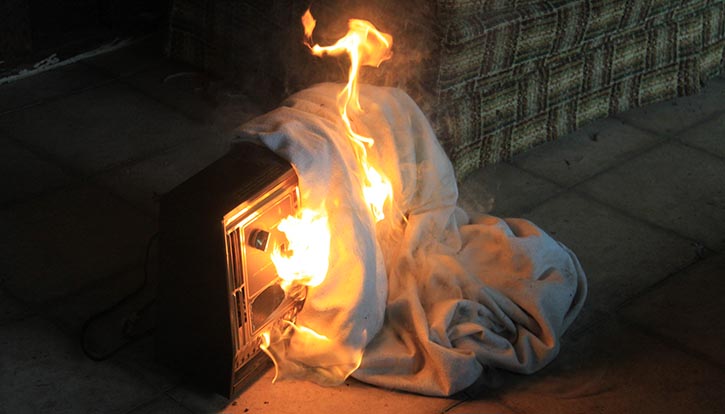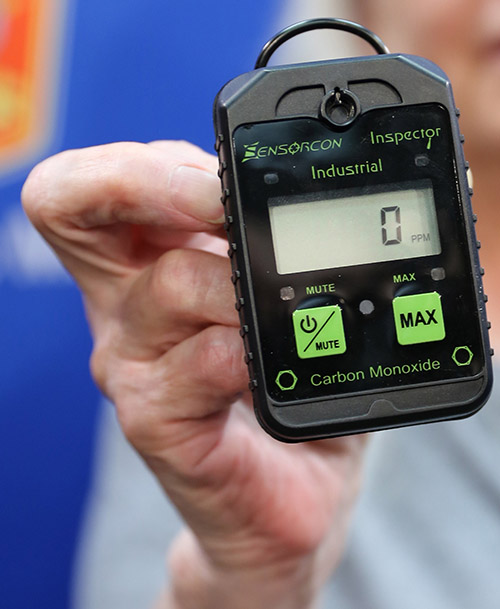Keep warm this winter and take steps to make sure your family stays safe
Dec. 11, 2023
 Not paying attention to where you toss blankets, coats and other winter essentials can cause a fire like the one seen here.
Not paying attention to where you toss blankets, coats and other winter essentials can cause a fire like the one seen here.Alternative heating sources can be a necessity here in Minnesota. But they can also be dangerous or even deadly.
So far this year:
- A portable generator running inside a garage caused carbon monoxide levels to spike to 1,300 parts per million (ppm) on the main floor of a Minnesota family's house. Fortunately, no one was home, as those levels would likely have killed any occupants.
- A
family of seven was rushed to the hospital after each family member, including an infant and a toddler, showed signs of a headache and began vomiting. Firefighters found that their furnace was leaking carbon monoxide.
- A
cabin in St. Louis County caught fire after a propane tank attached to a heater exploded inside. The resulting fire severely injured a woman and her son.
Carbon monoxide poisonings and fire deaths spike in the winter as we switch on our furnaces and turn to alternative heat sources to keep us warm. That's why our State Fire Marshal division is urging all Minnesotans: As you enjoy all that winter has to offer — whether you're ice fishing, hunting or cozy at home — make sure you're also taking steps to protect your loved ones.
“Carbon monoxide is odorless, tasteless and deadly," Deputy State Fire Marshal Bob Reif said. “An alarm could be the difference between life and death and is the only way you know if there are dangerous levels of carbon monoxide."
Fuel-burning heating or cooking devices that malfunction (or are not ventilated properly) can quickly emit deadly levels of carbon monoxide. We strongly recommend people buy carbon monoxide alarms with a constant digital read-out.
“If that isn't reading zero, get out and call 911," Reif said.
 This photo shows a portable alarm typically used in ice houses or hunting shacks.
This photo shows a portable alarm typically used in ice houses or hunting shacks.Install carbon monoxide alarms within 10 feet of each sleeping room or inside each sleeping room. Test the alarms, along with your smoke alarms, every month and replace them every five to seven years.
As this video shows, fuel-burning heating or cooking devices that malfunction or are not ventilated properly can quickly emit deadly levels of CO in ice fishing houses.
Doing these three things can save you and your loved ones from carbon monoxide poisoning:
- Only use heaters rated for indoor use.
- Make sure any heating or cooking units are properly ventilated and functioning properly.
- Install a CO alarm anywhere you are using an alternative heating source, including a hunting blind, cabin or ice house.
Electric heaters, fireplaces and wood stoves can also be dangerous if not properly maintained. There were 228 heating fires in Minnesota in 2022. Sixty percent of those started in a fireplace or chimney. Another 31 percent started in a furnace and 3 percent started with a portable heater.
Keep portable heaters three feet from anything combustible, and make sure you turn them off when leaving the room or going to sleep.
We also recommend getting your home heating system and chimney cleaned and inspected annually.

